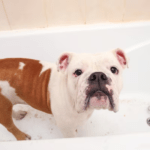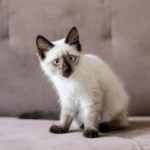Warm reception to the world of English Bulldogs. These charming companions are known for their unique looks, but did you know that their cute noses can sometimes lead to health issues?
In this blog post, we’ll dive into nose surgery for English bulldogs – exploring when it’s necessary, how to prepare for it, what to expect during recovery, and alternative treatment options. So keep reading to learn whether your furry friend needs nose surgery.
What is nose surgery for bulldogs?
Brachycephalic obstructive airway syndrome (BOAS). Nose surgery for bulldogs, also known as rhinoplasty or nares surgery, aims to improve their breathing by widening the nostrils or opening up the airways in the nasal passages.
This procedure can positively impact your furry friend’s quality of life by reducing snoring, improving airflow, and enhancing overall breathing comfort.
Signs that your bulldog may need nose surgery
Labored Breathing: If your Bulldog frequently breathes heavily or struggles to catch their breath, this could indicate obstructed airways.
Snoring and Snorting: While some snoring is regular, excessive snoring and snorting may indicate a more serious issue.
Exercise Intolerance: Bulldogs that tire quickly or avoid physical activity might be doing so because of difficulty breathing.
Cyanosis: A bluish tint to the gums or tongue suggests insufficient oxygen and warrants immediate veterinary attention.
Heat Intolerance: Bulldogs that overheat easily and struggle in warm weather might have compromised airways.
How to prepare for your bulldog’s nose surgery
Schedule an appointment with a veterinarian experienced in brachycephalic breeds. During the consultation, the vet will:
Consultation and Diagnosis
1. Veterinary Consultation
- Conduct a thorough physical examination.
- Review your bulldog’s medical history.
- Perform diagnostic tests (e.g., X-rays, blood work) to assess the severity of BOAS and overall health.
2. Discussing the Procedure
Understand the specifics of the surgery. Ask your vet about:
- The exact steps involved in the procedure.
- Potential risks and complications.
- Expected outcomes and benefits.
- Estimated cost and payment options.
Pre-Surgical Preparations
1. Health Optimization
- Feeding a balanced diet to maintain a healthy weight.
- Providing regular exercise within your dog’s tolerance limits.
- Keeping up with vaccinations and parasite control.
Day of Surgery
1. Morning Routine
- Take your bulldog for a short, calm walk to relieve stress and allow bathroom breaks.
- Administer any pre-surgery medications as directed by your vet.
2. Arriving at the clinic
Arrive at the veterinary clinic on time:
- Bring your dog’s medical records and any required paperwork.
- Discuss any last-minute concerns with the veterinary team.
3. Follow-Up Visits
Schedule follow-up appointments with your vet to:
- Monitor your bulldog’s healing progress.
- Address any concerns or complications.
- Adjust medications and care instructions as needed.

Recovery after a consultation and Diagnosis
After your English bulldog undergoes nose surgery, proper recovery and aftercare are crucial for a successful outcome. Your vet will provide detailed instructions on how to care for your pup post-surgery.
It’s essential to keep your bulldog calm and comfortable during recovery.
Ensure your furry friend gets plenty of rest in a quiet, peaceful environment. Monitor their incision site for any signs of infection or complications, and contact your vet immediately if you notice anything concerning.
Follow the prescribed medication schedule diligently to manage pain and prevent infection. Monitor their eating, drinking, and bathroom habits to ensure they are recovering well.
Your vet may recommend gentle walks on a leash once your bulldog starts feeling better, but avoid any strenuous activity until it is fully healed. Shower it with love, attention, and extra cuddles during this time to help it feel secure and supported throughout its recovery journey.
Types of Nose Surgery for Bulldogs
Stenotic Nares Surgery
Stenotic nares surgery is a joint for bulldogs to widen their nostrils and improve airflow through the nasal passages.
Soft Palate Resection (Staphylectomy)
Soft palate resection, or stapedectomy, involves trimming the elongated soft palate that often obstructs the airway in Bulldogs.
Everted Laryngeal Saccules Resection
Everted laryngeal saccules resection addresses the prolapse of the laryngeal saccules, which can block the airway.
Rhinoplasty
Rhinoplasty, a nose job, is a more extensive surgical procedure to restructure the nasal passages to improve airflow.
Recovery and Care for a Bulldog after nose surgery
Encourage Rest: Ensure your bulldog gets plenty of rest to promote healing. Avoid strenuous activities and provide a calm atmosphere.
Monitor Breathing
Monitor your dog’s breathing patterns closely. Contact your vet immediately if you notice labored breathing or unusual sounds.
Maintain Hydration and Nutrition
Encourage your bulldog to drink water and eat small, soft meals. Proper hydration and nutrition are essential for recovery.
Provide Comfort and Reassurance
During recovery, offer extra love and attention to your bulldog. Your presence and reassurance can help reduce stress and promote healing.
Long-term Benefits of Nose Surgery
Many Bulldogs experience significant improvements in their quality of life post-surgery.
Better Breathing:
More efficient airflow and reduced respiratory distress.
Increased Activity:
Greater willingness to engage in play and exercise.
Improved Overall Health:
Reduced risk of heatstroke and secondary health issues related to poor oxygenation.
Can English Bulldogs Clean Themselves?
English Bulldogs clean themselves for self-grooming but require regular help from their owners to stay clean and healthy. Their short legs and stocky build make it difficult for them to reach certain areas. Regularly cleaning their facial folds, ears, and tail pocket prevents infections. Additionally, they often need assistance with nail trimming and dental care. While they can manage some grooming, they heavily rely on their owners for thorough maintenance.


